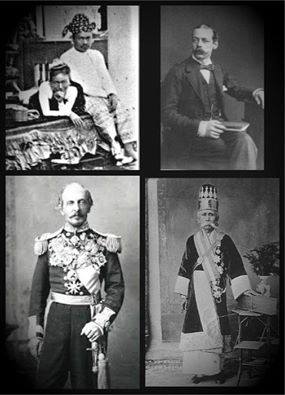
22 October 1885 - 10 November 1885
The ultimatum that led to war
people Kinwun Mingyi Queen Supayalat King Thibaw Lord Dufferin Lord Randolf Churchill
On 22 October 1885 Lord Dufferin the Viceroy of India issued an ultimatum calling on the government of King Thibaw to place its foreign relations under the permanent control of the British Indian Empire. The formal aim of the ultimatum was a resolution of the dispute with the Bombay-Burmah Trading Company but the real intent was to permanently end Burmese sovereignty. The British were increasingly worried about prospect of closer Franco-Burmese relations and attracted to the idea of Burma as a "back door" to trade with China. An independent Burmese kingdom was increasingly seen as an unnecessary nuisance. The deadline for the ultimatum was 10 November 1885.
Contrary to British propaganda, the Burmese government at the time under King Thibaw had been working hard to modernize the country, undertaking major constitutional, administrative, fiscal and other reforms. However, rebellions against increased taxes had severely weakened the administration.
The man pushing hardest for the annexation of Burma was Lord Randolph Churchill (father of Winston Churchill), then Secretary of State for India. The United Kingdom was about to hold elections and Churchill, a Conservative politician, hoped the overthrow of King Thibaw and the annexation of Burma would prove a decisive vote-winner.
While the Burmese immediately began emergency discussions on how to respond to the ultimatum, the British in Calcutta, Madras and Rangoon began preparing for war.
The photographs are of the key players in the ultimaturm that led to war (clockwise): King Thibaw and Queen Supayalat; Lord Randolph Churchill; the Kinwun Mingyi (then Chief Minister); and Lord Dufferinn, Viceroy of India (after the war to be made the Marquess of Dufferin and Ava).
Explore more in Late Konbaung Myanmar and the English Wars (1824-1885AD)